Cooking Meal

How can I reduce the amount of cleaning required after cooking a meal ?
Cleaning up after cooking can often feel like a chore, especially after spending time preparing a delicious meal. However, there are several strategies you can implement to minimize the mess and make cleaning up quicker and easier. Here's a detailed guide on how to reduce the amount of cleaning required after cooking: Before You Start Cooking - Plan Ahead: Decide what you will cook and read through the recipe completely. This helps you prepare all necessary ingredients and tools beforehand, reducing the need to clean up multiple times during cooking. Prep Your Workspace: Clear your countertops and clean them thoroughly before you start cooking. A clean work area means less mess to clean up later. Use Non-stick Cookware: Non-stick pans and bakeware require less oil or butter, making them easier to clean with just a quick wipe down. Set Up a Spill Station: Place a sheet of foil under or beside the stove to catch drips and spills, which can be easily thrown away after cooking. While You Are Cooking - Clean as You Go: Wash utensils and dishes immediately after using them. This prevents food residue from drying up and becoming harder to clean. Use Covers on Pots and Pans: This reduces splatters and saves you from having to wipe down the stove and surrounding surfaces. Contain Small Messes: Use a small bowl to hold waste like vegetable peels or fish bones rather than letting them spread over the counter. After You Have Cooked - Soak Dishes: If you have dishes that are difficult to clean, fill them with hot water and a little detergent to soak while you eat. This makes them much easier to clean later. Wipe Down Appliances: Give your appliances like blenders, mixers, or food processors a quick wipe down after use to remove any splatters. Clean the Stove Top and Countertops: Wipe these areas down with a damp cloth after cooking to avoid crusty buildup. General Tips for Efficiency - Simplify Your Recipes: Opting for simpler recipes can reduce the number of dishes used and ingredients prepared. Cook One-Pot Meals: One-pot meals like stews, casseroles, or stir-fries require fewer dishes to wash. Use Disposable Items Wisely: While not environmentally friendly, disposable items like baking paper, foil, or paper plates can be used strategically in situations where cleanup is particularly challenging.
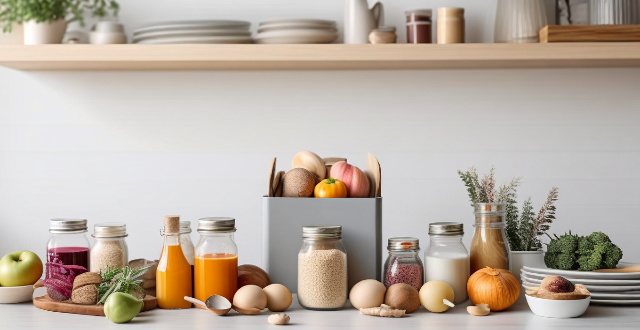
How can I simplify my grocery shopping process to save time in the kitchen ?
Simplifying the grocery shopping process can save time in the kitchen. Planning ahead, creating a meal plan and categorized shopping list, using technology, choosing efficient shopping strategies, and streamlining meal preparation with batch cooking and simple recipes can all contribute to a more efficient and enjoyable cooking experience.
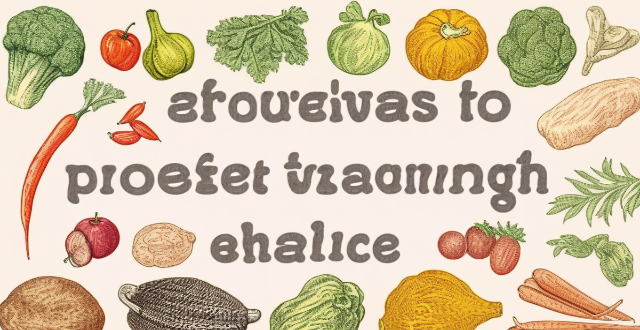
How can I streamline my cooking process to save time in the kitchen ?
The text provides tips and tricks for streamlining the cooking process, including planning ahead, using slow cookers or pressure cookers, prepping ingredients in advance, cooking once and eating multiple times, and cleaning as you go. These strategies aim to save time, reduce stress, promote healthy eating, and create a more enjoyable cooking experience by emphasizing preparation and organization.

How can I use kitchen appliances to save time while cooking ?
Using kitchen appliances like food processors, slow cookUsing kitchen appliances like food processors, slow cookers, rice cookers, slow cookers, electric pressure cookers, rice cookers, and stand mixers can significantly save time in meal preparation. These appliances offer features such as chopping, grinding, making dough, cooking at different heat settings, and precise mixing, allowing for efficient and convenient cooking experiences.

What are some time-saving tips for meal prep in the kitchen ?
Meal prep is an essential part of a healthy and organized lifestyle. Here are some time-saving tips for meal prep in the kitchen: 1. Plan ahead to avoid last-minute trips to the grocery store and ensure that you have everything you need for your meals. 2. Make a grocery list of all the ingredients you will need to save time by avoiding unnecessary trips to the store. 3. Choose simple recipes that require minimal preparation and cooking time, such as one-pot or pan recipes. 4. Cook in bulk to save time during meal prep by cooking large portions of food and then dividing them into individual servings for easy storage and reheating later in the week. 5. Use a slow cooker or pressure cooker to cook food while you are away from home, so you can come back to a delicious and ready-to-eat meal. 6. Prep vegetables ahead of time by washing, chopping, and storing them in airtight containers in the fridge for easy access when you need them. 7. Use frozen vegetables and fruits, which are just as nutritious as fresh ones and can save you a lot of time during meal prep. 8. Keep your kitchen clean and organized to save time during meal prep by ensuring that everything is easily accessible when you need it.
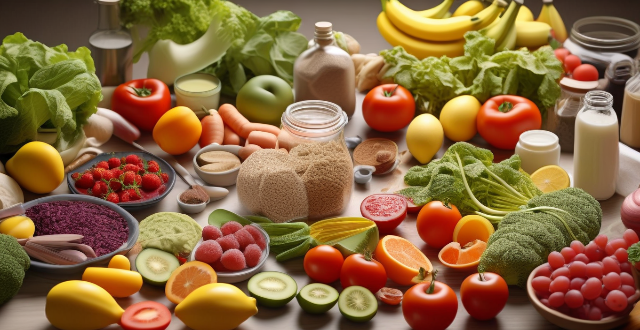
How important is meal planning for maintaining a healthy diet ?
Meal planning is crucial for maintaining a healthy diet, as it allows for improved nutritional intake, time management, cost savings, and stress reduction. To implement meal planning effectively, set realistic goals, create a weekly plan, involve family members, keep it simple, and use technology to simplify the process. By following these tips, you can achieve a healthier lifestyle through effective meal planning.

What are some creative ways to use tofu in vegetarian cooking ?
Tofu is a versatile and nutritious ingredient that can be used in a variety of vegetarian dishes. Here are some creative ways to use tofu in your cooking: marinated and grilled tofu skewers, creamy tofu pasta sauce, tofu stir-fry, tofu bao buns, tofu scramble, and tofu dumplings. By incorporating these ideas into your vegetarian cooking, you can enjoy the many health benefits of tofu while exploring new flavors and textures in your meals.

How do I meal prep for a week using simple home-cooked recipes ?
Meal prepping is an excellent way to save time, money, and ensure that you are eating healthy meals throughout the week. Here's how you can meal prep for a week using simple home-cooked recipes: 1. Plan your meals based on your dietary needs, preferences, and schedule. 2. Shop for ingredients according to your meal plan. 3. Prep your ingredients ahead of time by washing, chopping, and storing them in airtight containers. 4. Cook and assemble your meals into individual portions and store them in meal prep containers. 5. Reheat and enjoy your pre-made meals throughout the week. By following these steps, you can successfully meal prep for an entire week using simple home-cooked recipes.

What are some common mistakes people make when creating a fitness meal plan ?
When creating a fitness meal plan, it's important to avoid common mistakes such as neglecting macronutrient distribution, ignoring micronutrient needs, underestimating calorie needs, overcomplicating meal preparation, and neglecting hydration. To ensure success in achieving health and fitness goals, prioritize balance, simplicity, and sustainability while focusing on meeting individual nutritional needs.

What are some tips for meal prepping to promote healthy eating habits ?
Meal prepping is an excellent way to promote healthy eating habits. Here are some tips: 1. Plan your meals based on your dietary needs and preferences. 2. Create a shopping list of all the ingredients you'll need for the week. 3. Cook in bulk and choose recipes that can be easily portioned out. 4. Pay attention to portion sizes to avoid overeating. 5. Stay hydrated by carrying a reusable water bottle with you throughout the day.

What are some must-have kitchen gadgets for healthy eating ?
In pursuit of healthy eating, having the right kitchen gadgets can significantly improve the preparation and enjoyment of nutritious meals. This article lists essential tools such as a high-quality chef's knife for efficient chopping, a food processor for versatile cooking tasks, a steamer basket for nutrient-rich cooking, and other devices like slow cookers, spiralizers, and immersion blenders that facilitate healthy meal preparation. Each device is discussed in terms of its benefits, uses, and why it is considered essential for healthy cooking. By incorporating these tools into your kitchen setup, you can make preparing healthy meals easier and more enjoyable, setting the foundation for a lifetime of healthy eating habits.

What are the benefits of having a smoothie versus a solid meal for breakfast ?
The article discusses the benefits of having a smoothie versus a solid meal for breakfast. Smoothies are easy to digest, nutrient-dense, time-saving, and portable, while solid meals provide longer-lasting energy, more variety, better digestion, and social benefits. The choice between the two depends on individual preferences, lifestyle, and dietary needs.

What are some ways to organize my kitchen to make cooking more efficient ?
Organizing your kitchen can greatly enhance the cooking experience by making it more efficient and enjoyable. Here are some strategies to consider: 1. Zone Cooking Areas 2. Declutter Regularly 3. Smart Storage Solutions 4. Group Like Items Together 5. Maximize Fridge and Freezer Space 6. Keep a Clean Sink 7. Lighting and Safety

How can I incorporate more whole foods into my home cooking ?
The provided text offers a comprehensive guide on how to incorporate more whole foods into one's home cooking routine. Here is a summary of the key points: 1. **Plan Your Meals Around Whole Foods:** Engage in weekly menu planning, focusing on meals that include whole food ingredients, and make a shopping list based on this plan to avoid processed items. 2. **Start with Whole Grains:** Swap refined grains like white rice and pasta with whole grain versions such as brown rice and whole wheat pasta. Experiment with different whole grains like quinoa and barley for added variety. 3. **Include More Fruits and Vegetables:** Aim for a diverse range of fruits and vegetables to get a wide spectrum of nutrients. Prep them at the start of the week for easy access. 4. **Choose Lean Proteins:** Opt for skinless poultry and fish over red meats. Incorporate plant-based proteins like legumes, nuts, and seeds. 5. **Use Healthy Fats:** Cook with olive oil or avocado oil instead of butter or margarine. Add nuts and seeds to dishes for a healthy fat boost. 6. **Limit Processed Foods:** Be mindful of food labels and avoid products with numerous unrecognizable ingredients. Make your own snacks using whole food ingredients. 7. **Get Creative with Spices and Herbs:** Use these natural flavor enhancers instead of salt or high-sodium seasonings. Consider growing your own herbs for fresh flavors year-round. 8. **Cook from Scratch When You Can:** Make homemade stocks, sauces, and dressings instead of buying pre-made versions. Batch cook whole food meals and freeze leftovers for quick meals later. 9. **Embrace Fermented Foods:** Include probiotic-rich foods like kimchi and sauerkraut for gut health benefits. 10. **Keep Learning and Adapting:** Continuously educate yourself about whole foods and their nutritional benefits. Stay open to trying new whole foods to keep meals exciting and varied. By following these steps, individuals can successfully integrate more whole foods into their home cooking, leading to a healthier lifestyle for themselves and their families.

Can you suggest some vegetarian meal prep ideas for busy weekdays ?
Vegetarian meal prep ideas for busy weekdays include roasted vegetable bowls, lentil soup, chickpea salad sandwiches, veggie burgers, and quinoa stir fry. These meals are packed with nutrients, flavorful, and convenient for busy schedules. By planning ahead and preparing these meals in advance, you can ensure that you have healthy and tasty options available throughout the week without sacrificing time or effort.
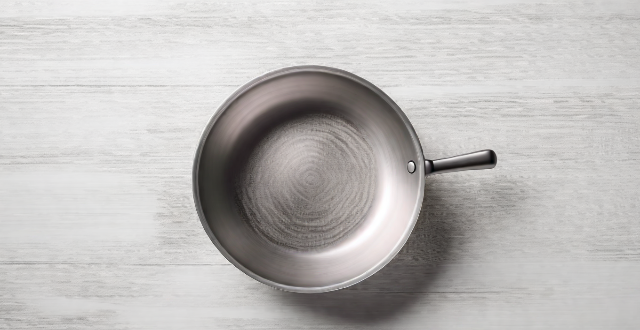
Can you explain the different types of cooking pans and their uses ?
The text provides a detailed overview of different types of cooking pans, highlighting their specific uses and features. It covers non-stick pans, cast iron pans, stainless steel pans, copper pans, aluminum pans, grill pans, skillets, saucepans, and griddle pans. Each type of pan is described in terms of its ideal uses and unique characteristics, such as heat conductivity, maintenance requirements, and compatibility with various cooking methods and materials. The summary emphasizes the importance of using the right pan for a given task to achieve optimal cooking results.

What are the basic techniques used in Chinese cooking ?
Chinese cuisine is known for its diverse flavors and cooking techniques. Here are some of the basic techniques used in Chinese cooking: 1. Stir-frying involves quickly frying small pieces of food in a wok or frying pan over high heat. The key to successful stir-frying is to use hot oil, fresh ingredients, and constant motion to prevent burning. 2. Steaming involves placing food in a steamer basket over boiling water and allowing it to cook through steam. This method is often used for dumplings, buns, fish, and vegetables. 3. Braising is a slow-cooking method that involves simmering meat or vegetables in liquid until they become tender and flavorful. This technique is often used for stews, soups, and braises. 4. Deep-frying involves submerging food in hot oil until it becomes crispy and golden brown. This technique is often used for fried rice, spring rolls, and tempura dishes. 5. Roasting involves cooking food in an oven at high temperatures until it becomes caramelized and tender. This technique is often used for roasted meats, vegetables, and baked goods like mooncakes and egg tarts.

What are the best techniques for cooking seafood ?
The article provides a summary of the best techniques for cooking seafood, which include poaching, grilling, steaming, and baking. Poaching is a gentle method of cooking seafood in a flavorful liquid such as water, broth or wine. Grilling is ideal for firm-fleshed fish like salmon or swordfish and adds flavor and texture to seafood. Steaming is a healthy way to cook seafood without adding extra fat and works well for fish fillets or shellfish like clams or mussels. Baking is a dry heat method that works well for thicker cuts of fish like cod or haddock. The article emphasizes the importance of paying attention to timing and temperature to avoid overcooking seafood.

How can I make a family dinner more budget-friendly ?
The article provides various tips for making family dinners more budget-friendly, including meal planning, buying in bulk, cooking from scratch, shopping seasonally, using leftovers creatively, avoiding impulse buys, and sharing meals with friends or family. By following these suggestions, families can save money while still enjoying tasty and nutritious home-cooked meals.

How does proper cooking and baking contribute to food safety ?
Food safety is crucial for maintaining public health and preventing illnesses. Proper cooking and baking are vital components of food safety, as they can destroy harmful microorganisms that may contaminate raw ingredients. High temperatures during cooking and baking kill most bacteria, reduce viruses, and eliminate parasites. Additionally, proper cooking practices prevent cross-contamination by using separate utensils and cutting boards for different types of food. To ensure food safety during cooking and baking, it's essential to use a food thermometer to check the internal temperature of cooked foods, follow recipes and time guides, keep work surfaces and equipment clean, store raw and cooked foods separately, avoid overcrowding pans, and refrigerate leftovers promptly. By adopting these best practices, you can significantly minimize the risk of foodborne illnesses and enjoy safe, delicious meals.

What are the most common mistakes when cooking lobster at home ?
Cooking lobster at home can be delightful but common mistakes can affect taste and texture. Here are the most frequent errors: 1. **Not Preparing the Lobster Properly** - Underestimating the amount of salt needed for cooking water. - Ignoring the rinse before cooking to remove sand or grit. 2. **Overcooking the Lobster** - Cooking too long results in tough and chewy lobster. - Lack of temperature control during cooking. 3. **Choosing the Wrong Lobster** - Selecting poor quality or lethargic lobsters. - Neglecting size variation leading to uneven cooking times. 4. **Disregarding Safety Precautions** - Handling live lobsters incorrectly, risking injury. - Ignoring cross-contamination with other foods. 5. **Inadequate Flavoring** - Skipping seasoning, missing out on enhancing natural sweetness. - Overlooking garnishes that can improve the dining experience. 6. **Improper Storage and Handling** - Storing improperly if not cooked immediately. - Delaying cooking after purchase, risking the quality of the lobster. By avoiding these mistakes, you can ensure that your homemade lobster dishes are delicious and succulent.
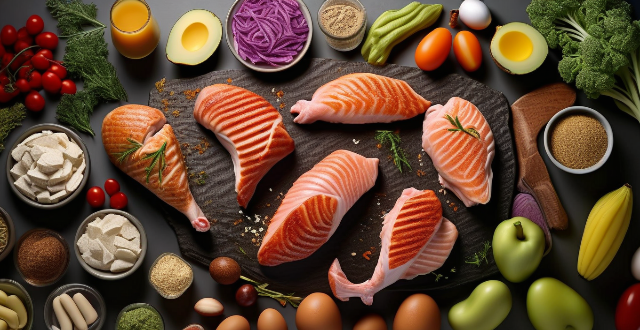
What are some good sources of protein for a fitness meal plan ?
Including protein-rich foods like chicken breast, salmon, eggs, Greek yogurt, and quinoa in a fitness meal plan can support muscle building and fat loss goals.
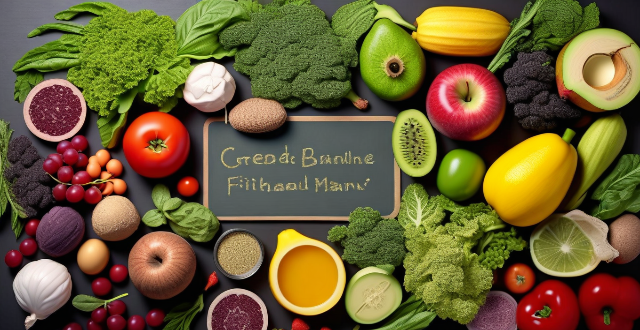
How can I create a balanced fitness meal plan ?
To create a balanced fitness meal plan, start by determining your caloric needs and focus on nutrient-dense foods. Include lean protein, whole grains, fruits, vegetables, and healthy fats in your meals. Balance your macronutrients (carbs, protein, and fats) and plan your meals and snacks ahead of time to ensure you're getting the right balance of nutrients throughout the day. Stay hydrated and be mindful of portion sizes to support your health and fitness goals.

How do I make a bento box meal ?
How to make a bento box meal with rice, protein, vegetables, and garnishes. Includes steps for cooking rice, preparing protein, cutting vegetables, assembling the bento box, and packing it for later enjoyment.

What is the ideal meal timing for optimal sports performance
The ideal meal timing for optimal sports performance is crucial for athletes to maximize their potential. Proper nutrition can help improve endurance, strength, and overall performance during physical activities. Key points to consider when planning meals include eating a pre-workout meal containing carbohydrates, protein, and healthy fats 2-3 hours before exercise; staying hydrated throughout the day; consuming simple carbohydrates during longer workouts; eating a post-workout meal rich in protein and carbohydrates within 30 minutes after exercising; and avoiding eating too close to workout time. By following these guidelines, athletes can ensure they have the necessary fuel for their bodies to perform at their best.
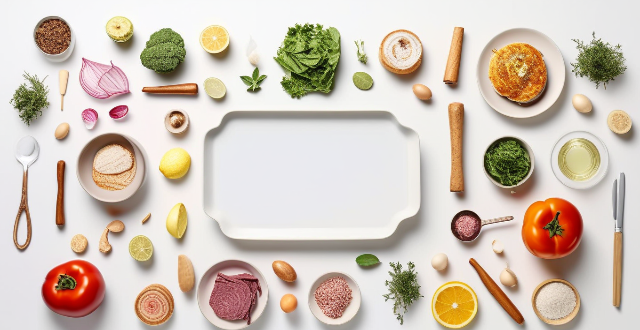
What are some time-saving tips for preparing home-cooked meals ?
Time-saving tips for preparing home-cooked meals include planning meals in advance, using a slow cooker or pressure cooker, prepping ingredients ahead of time, cooking once and eating twice, using convenience foods wisely, cleaning as you go, and simplifying your menu. These strategies can help save time and reduce stress during meal prep while still allowing you to enjoy delicious homemade dishes.

How do I choose the right type of rice for Chinese cooking ?
When it comes to Chinese cooking, selecting the rightWhen it comes to Chinese cooking, selecting the right for achieving the desired texture and selecting the right type of rice is crucial for achieving the desired texture and flavor in your dishes. Consider the dish you are making, look for quality and freshness when purchasing rice, and don't forget to consider your personal preferences. By following these steps, you can choose the perfect type of rice for your Chinese cooking needs.
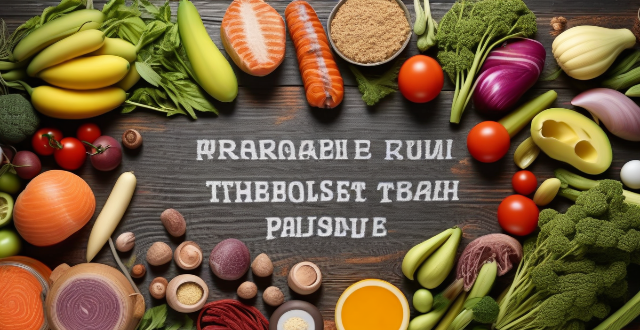
What are the best foods to include in a fitness meal plan ?
When creating a fitness meal plan, it's important to choose foods that will help you reach your fitness goals. Here are some of the best foods to include: protein-rich foods like lean meats, fish, eggs, legumes, dairy products, and plant-based protein sources; whole grains like brown rice, quinoa, oats, whole wheat bread and pasta, barley, millet, and rye; fruits and vegetables like leafy greens, berries, stone fruits, cruciferous vegetables, and squash; healthy fats like nuts, seeds, avocado, olives and olive oil, coconut and coconut oil; and hydrating foods like cucumbers, celery, bell peppers, zucchini, tomatoes, and watermelon. Incorporating these nutrient-dense foods into your fitness meal plan will help you fuel your workouts, support muscle recovery, and achieve your fitness goals.

How can I incorporate more plant-based meals into my family's diet ?
Incorporating more plant-based meals into your family's diet can lead to improved health, weight management, and a reduced environmental impact. Here's how to do it: 1. **Understand the Benefits**: Improved health, weight management, and environmental sustainability are key advantages of a plant-based diet. 2. **Gradual Transition**: Start by replacing one or two meals per week with plant-based options to ease your family into the change. 3. **Meal Ideas**: Try Meatless Mondays, vegetable-centric dinners, and incorporating plant-based proteins like tofu and beans. 4. **Involve Your Family**: Get your family excited about the change by letting them choose recipes and shop for ingredients. 5. **Shopping Tips**: Buy fresh produce, stock up on staples like grains and legumes, and experiment with new foods. 6. **Education and Resources**: Use online resources like websites, YouTube channels, and cookbooks to learn about plant-based eating. 7. **Meal Planning and Preparation**: Plan weekly meals, consider batch cooking, and get creative with leftovers. 8. **Emphasize Flavor and Creativity**: Use herbs, spices, marinades, and sauces to add flavor, and don't be afraid to experiment with different cooking techniques.